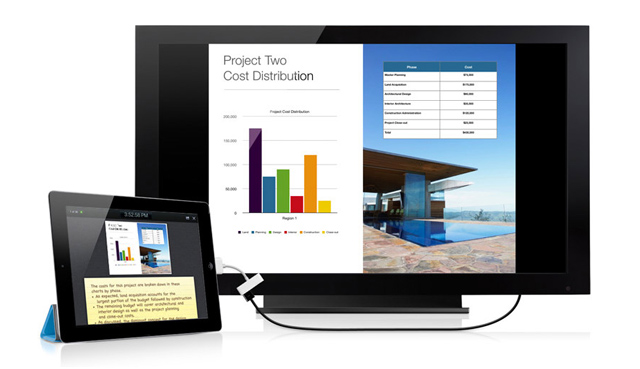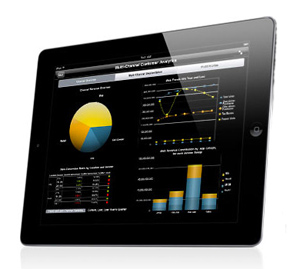Cultural shift
Tablets generally have seen explosive growth in the U.S. and around the world, with the iPad as the clear leader. A survey released in October from Good indicates that the iPad and iPad 2 were responsible for a staggering 96 percent of tablet activations in the enterprise in the third quarter of 2011. With just 4 percent of activations being Android-based, Apple has a clear lead with the enterprise crowd at the moment.
With its established security and surprising depth of ever-evolving applications, the iPad is enabling a cultural shift in adoption patterns and how employees actually use technology. The concept of “Bring Your Own Device” (BYOD) is booming at businesses around the world, with employees bringing in myriad smartphones and laptops. The iPad makes the IT guys more wary than these other devices, but slowly they’re coming around.
Freimark told me a story of company affected by iPad surprise. He says a major TV broadcast company asked him to provide the broadcaster with an iPad that could be “holiday thank you gifts” for its sales employees last year. Fast forward to six months later, and many of those employees are asking to use their iPads in the office for work purposes because they like them so much. Now Freimark is helping that company’s IT department with mobile device management to support iPads.
When it comes to iPad deployment examples, Apple likes to spotlight St. Louis-based RehabCare, a leading provider of hospital-based rehabilitation facilities in the U.S. RehabCare CIO Dick Escue talked at the CloudBeat 2011 conference about his company’s fevered adoption of Apple devices and consumer-focused products, with deployments to its more than 1,200 client hospitals and nursing facilities in 43 states. One major point he stressed was that after supporting Apple devices, the company saw a 92 percent reduction in broken devices.
But in perspective, Freimark says RehabCare is an “early adopter” and doesn’t represent the masses of businesses that are still considering the use cases of the iPad. There’s still a ton of pushback, and miles to go before the IT department will get over its fears.
What’s next

If you take a wide view, an enormous amount of businesses haven’t even touched the iPad yet. Not every company is a RehabCare and not every company has a CEO willing to override the IT department. Apple’s claim that 93 percent of Fortune 500 companies are deploying or testing iPads probably skews heavily toward the “testing” phase.
“There aren’t a lot of companies replacing laptops and PCs with iPads,” Freimark said. “But they are asking a lot of questions. They’re asking, ‘Will this actually replace desktops or will it remain a secondary device? If I want to use it, how to consume it? If I have to do it, how much investment do I have to make?'”
After figuring out use cases, Freimark says many businesses will add the iPad to their lineup of tools during the next few years, as they figure out the best way to use and integrate tablets. Businesses move much more slowly than consumers, but slowly and surely they get there. He spotlighted a recent deployment that he guided as an example of what’s to come.
Luxottica, which produces and sells high-end eyewear, contacted his company so it could buy and deploy iPads for employee training at 337 LensCrafters locations across the U.S. The Luxottica HR department got approval for iPad deployment and surprised the IT department with the proposal. Friemark’s team disabled the App Store and camera and locked down the devices as much as possible. Then the team loaded a custom-made iOS app for specific training modules.
Freimark believes companies like Luxottica and RehabCare are just the start of a tablet revolution for businesses. I’m inclined to believe him for one final reason: cost. If there’s any gauge that businesses like to use most for making commitments, it’s money. An iPad costs $500 for the cheapest model. With the right iOS applications, an iPad can nearly replace a business laptop that costs $800 or more.
The return on investment for tablets, especially once they evolve further, will be much greater than deploying more complicated laptops. Because it’s cheaper to deploy, it’s not hard to imagine that more businesses will attempt to replace laptops with iPads. Only time and balance sheets will tell.
iPad photos courtesy of Apple.com


